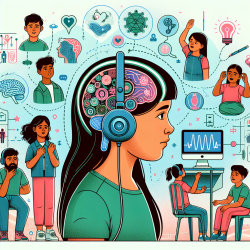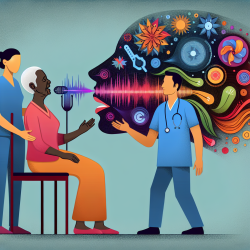In the ever-evolving landscape of education and student well-being, the integration of urban greenspaces presents a promising avenue for fostering resilience and equity. Drawing insights from the research article "Resilience and Equity in a Time of Crises: Investing in Public Urban Greenspace Is Now More Essential Than Ever in the US and Beyond," we can explore practical ways to enhance the skills of educational practitioners and encourage further research.
Urban greenspaces, such as parks, community gardens, and green infrastructure, are more than just aesthetic additions to our cities. They play a critical role in mitigating the adverse effects of structural racism, climate change, and public health crises like COVID-19. For educational practitioners, understanding and leveraging these spaces can significantly impact student well-being and academic performance.
Benefits of Urban Greenspaces
Urban greenspaces offer numerous benefits, including:
- Physical Health: Increased physical activity and reduced risk of chronic diseases.
- Mental Health: Lower levels of stress, anxiety, and depression.
- Social Cohesion: Enhanced community connectedness and reduced crime rates.
- Environmental Resilience: Improved air quality and reduced urban heat island effects.
Implementing Urban Greenspace Strategies in Schools
- Outdoor Classrooms: Utilizing outdoor spaces for learning can promote physical distancing while providing a natural setting that enhances cognitive function and reduces stress.
- Community Gardens: Establishing school gardens can teach students about nutrition, ecology, and responsibility, while also providing a hands-on learning experience.
- Green Playgrounds: Transforming schoolyards into green spaces can encourage physical activity, improve social interactions, and foster a connection with nature.
Encouraging Further Research
Educational practitioners should be encouraged to conduct further research on the impacts of urban greenspaces on student outcomes. Potential research areas include:
- Longitudinal Studies: Examining the long-term effects of greenspace exposure on academic performance and mental health.
- Equity-focused Research: Investigating how greenspace investments can reduce health and educational disparities among different student populations.
- Interdisciplinary Approaches: Collaborating with urban planners, public health experts, and environmental scientists to create holistic strategies for greenspace integration.
Practical Tips for Practitioners
- Engage the Community: Involve students, parents, and local organizations in the planning and maintenance of greenspaces to ensure they meet the community's needs.
- Advocate for Funding: Seek grants and partnerships with local governments and nonprofits to support greenspace projects.
- Monitor and Evaluate: Regularly assess the impact of greenspaces on student well-being and adjust strategies as needed.
By integrating urban greenspaces into educational settings, practitioners can create environments that support the holistic development of students, fostering resilience and equity in the face of ongoing challenges.
To read the original research paper, please follow this link: Resilience and Equity in a Time of Crises: Investing in Public Urban Greenspace Is Now More Essential Than Ever in the US and Beyond.










